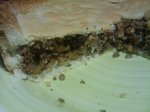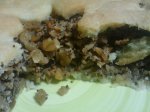This is a wonderful impromptu dish I made for my mother when looking at what ingredients I had at hand. From my trusted source of ocado recipes.
Don’t be put off by the large quantity of garlic, as the flavour will mellow in the cooking. Good with boiled new potatoes and green beans.
Serves 4
Total time required 50 mins
Preparation time: 10 mins
Cooking time: 40 mins
Ingredients:
15 Garlic Cloves, unpeeled
1 pinch Salt
1 pinch Black Pepper, freshly ground
2 tbsp Olive Oil
30g Butter, unsalted
4 Chicken Breasts, skin on
1 Bay Leaf
450ml Dry Cider
200ml Apple Juice
200ml Double Cream
1 tbsp Thyme, leaves
Instructions
Preheat the oven to 180°C (350°F/Gas 4). Cook the whole, unpeeled garlic cloves in a pan of boiling salted water for 4 minutes. Drain, cool slightly, then peel and set aside.
Heat the oil and butter in the casserole. When sizzling, add the chicken, skin-side down, and cook for 4–5 minutes, or until deep golden brown. Turn the chicken over and add the garlic cloves, bay leaf, cider, and apple juice. Cover and transfer to the oven for 20–25 minutes, or until the chicken is cooked through.
Lift the chicken out of the pan. Remove half the garlic cloves and discard. Bring the remaining juices up to the boil. Crush the garlic into the juices with a fork, then boil until reduced and thickened slightly.
Add the cream, season to taste with salt and pepper, and simmer for 1 minute. Return the chicken to the sauce and baste with the juices; add the thyme leaves and serve immediately.


